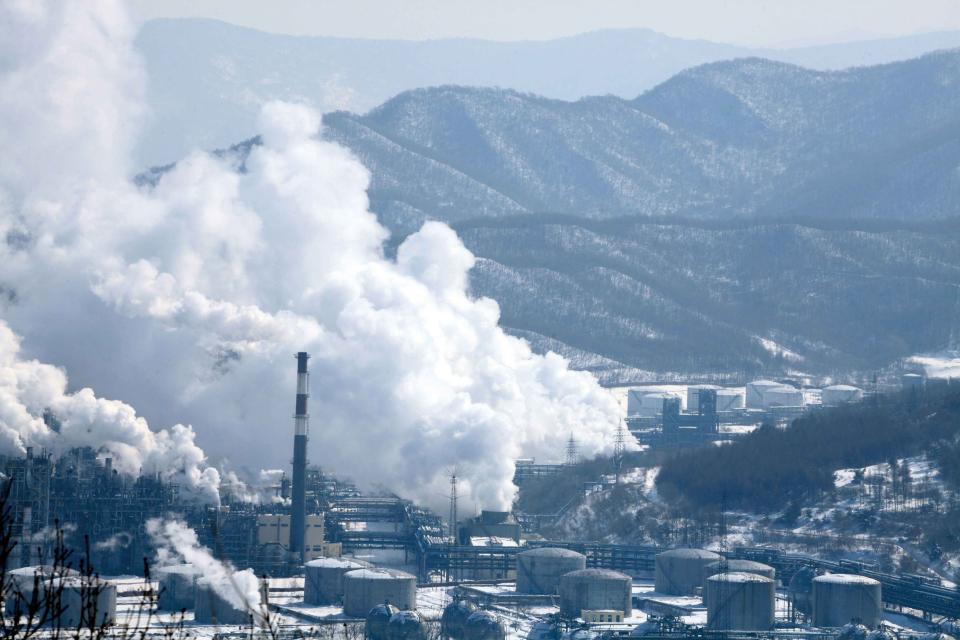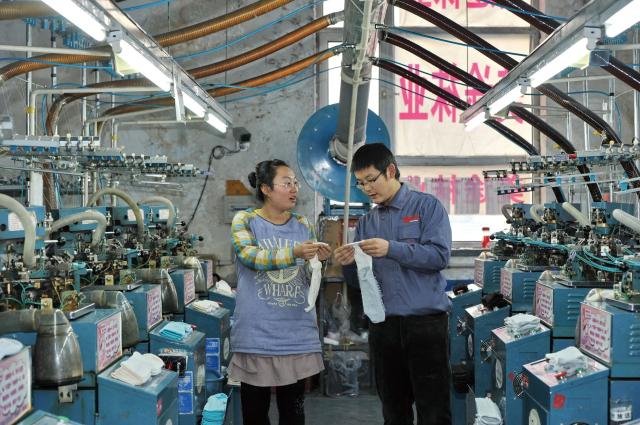The three provinces that make up China’s northeast – Heilongjiang, Jilin and Liaoning provinces – were among the first regions in the country to be industrialized, relying largely on heavy and chemical industries, energy resources, raw materials and SOEs. Over the past decade, however, the region has suffered a more drastic economic plight than the rest of the country.
Over the years, the central government has introduced a package of stimulus measures trying to keep the region afloat. In October 2003, the State Council, China’s cabinet, made it a national strategy to revive the northeast by unveiling a series of subsidy measures. In 2007, the National Guidelines on Rejuvenating the Northeast were proposed to revive the region’s economy in a comprehensive way. In 2016 alone, at least three national documents were released to boost the northeast economy. The region’s flagging economy has to date not taken a turn for the better.
Since 2014, the economic growth rate of the region has ranked lowest across the country. From January to June 2017, the growth rate in Liaoning was 2.1 percent, in Heilongjiang 6.3 percent and in Jilin 6.5 percent, ranking as the bottom three provinces and regions nationwide.
The previous strategy to rejuvenate the northeast, particularly Jilin Province, mainly focused on promoting heavy industry including the automobile and chemical sectors, the pillar industries of the province, while largely ignoring light industry. The Jilin Report, however, offered a different prescription, arguing that the province has great potential and a comparative advantage in developing light industry, and urging the province to improve related infrastructure.
Justin Yifu Lin’s team suggested that the crucial way to address Jilin’s economic plight was to shift from a catch-up strategy that defies comparative advantages to one that plays to the region’s strengths. Jilin’s comparative advantage, according to Lin, is to “develop light industry before vigorously promoting heavy industry.”
Official statistics showed that Jilin’s light industry accounted for 32 percent of its industrial structure in 2015, up from nearly 20 percent in 2003. Lin’s team recommended that Jilin could benefit from its solid heavy-industry infrastructure to accelerate the development of labor-intensive manufacturing of goods, including household appliances, garments and textiles, as an initial step to reviving the economy.
The industrial added value of Jilin’s textile enterprises reached 14.7 billion yuan (US$2.27 billion) in 2016, an increase of 16.1 percent year on year, exceeding that of the energy sector which stood at 12.2 billion yuan (US$1.9 billion). The textile industry has been added to the list of Jilin Province’s top eight key industries.
“Those who still believe that the northeast should adhere to the development of heavy industry, and that coastal areas should stick to light industry, are still living under the planned economy,” said Fu Caihui, one of the report’s authors.
According to the report, the labor cost of labor-intensive sectors based in Jilin is only 30 to 50 percent of that of coastal Jiangsu and Zhejiang provinces and so industries with comparative advantages in Jilin should be labor-intensive. It stated that the province should develop five great industrial clusters such as agriculture, health, textiles, equipment and information technology by receiving industries relocated from provinces of Zhejiang, Jiangsu and Guangdong where light industry is already highly developed.
To date, Jilin’s manufacturing sector has employed only 5.7 percent of the workforce. In Zhejiang Province and the city of Tianjin, the proportion is respectively 40.3 percent and 28.2 percent. The Jilin Report stated that it was very unlikely the heavy industry sector would create jobs in the province, adding that Jilin urgently needed labor-intensive light industry to increase employment.
According to the China Labor Statistical Yearbook 2016, laid-off workers numbered 7.5 million in the three northeastern provinces, accounting for 25 percent of the total nationwide. Because of unemployment and the under-developed light industry and service industry sectors, it stated that many people have to leave the region for southern China to pursue a living, leading to a heavy outflow of people.
According to data from the Sixth National Population Census in 2010, nearly 2.2 million people had left the region in the decade leading up to 2010. In 2016, Jilin, with a population of over 27 million, registered an outflow of over 200,000 people, including a large number of high-tech staff and skilled workers. As a more specific example, only 18.9 percent of graduates from Jilin University, one of China’s top universities, chose to stay and work in the province.

 Old Version
Old Version
